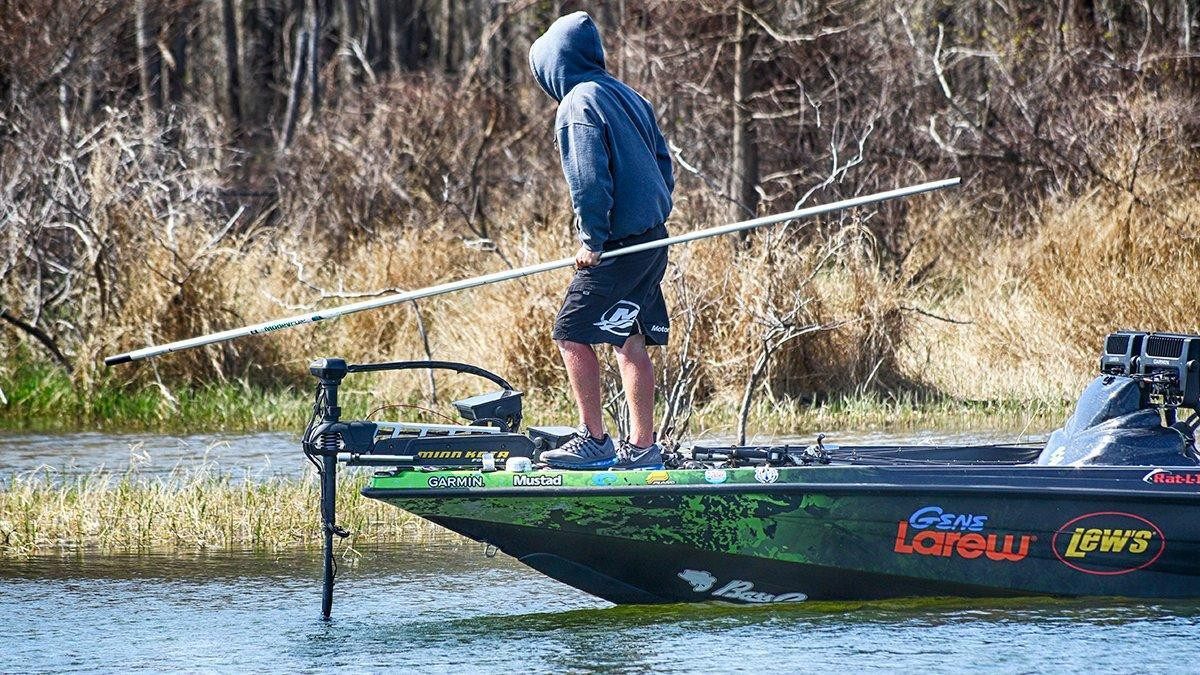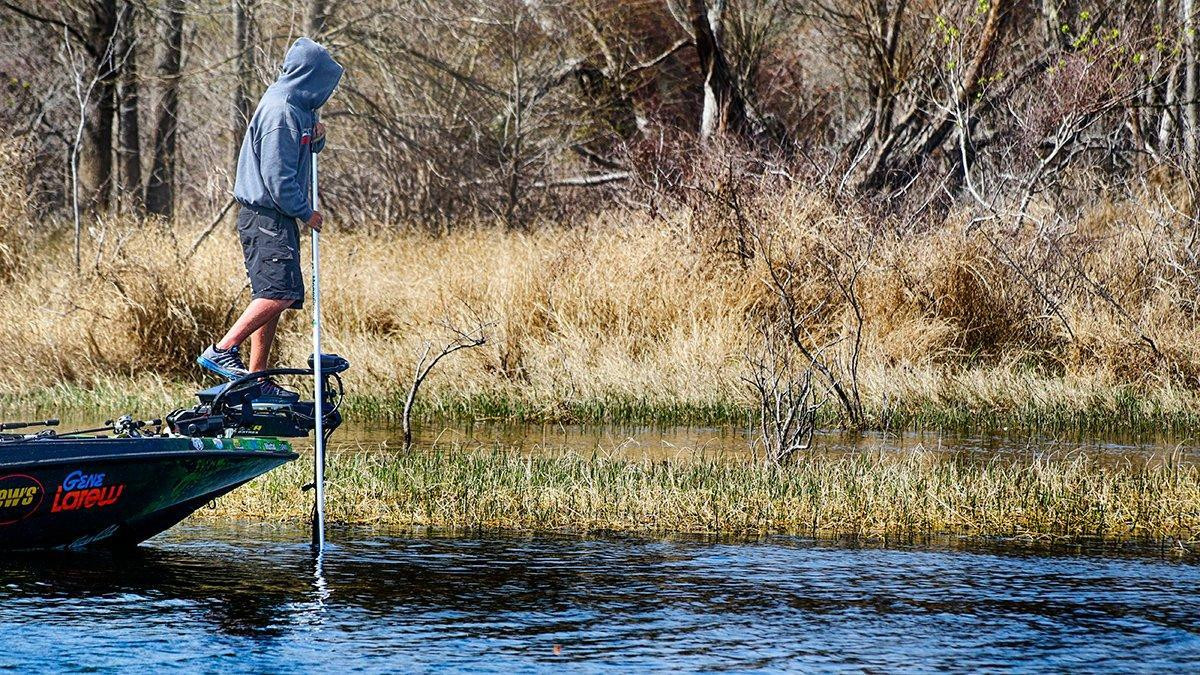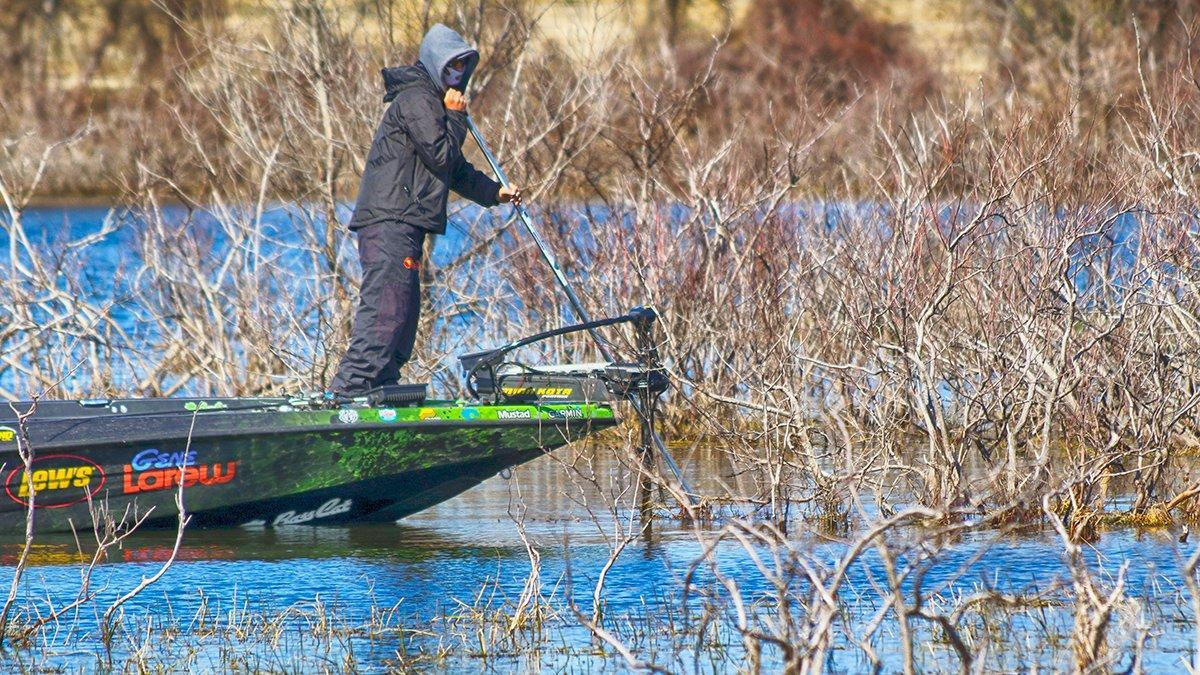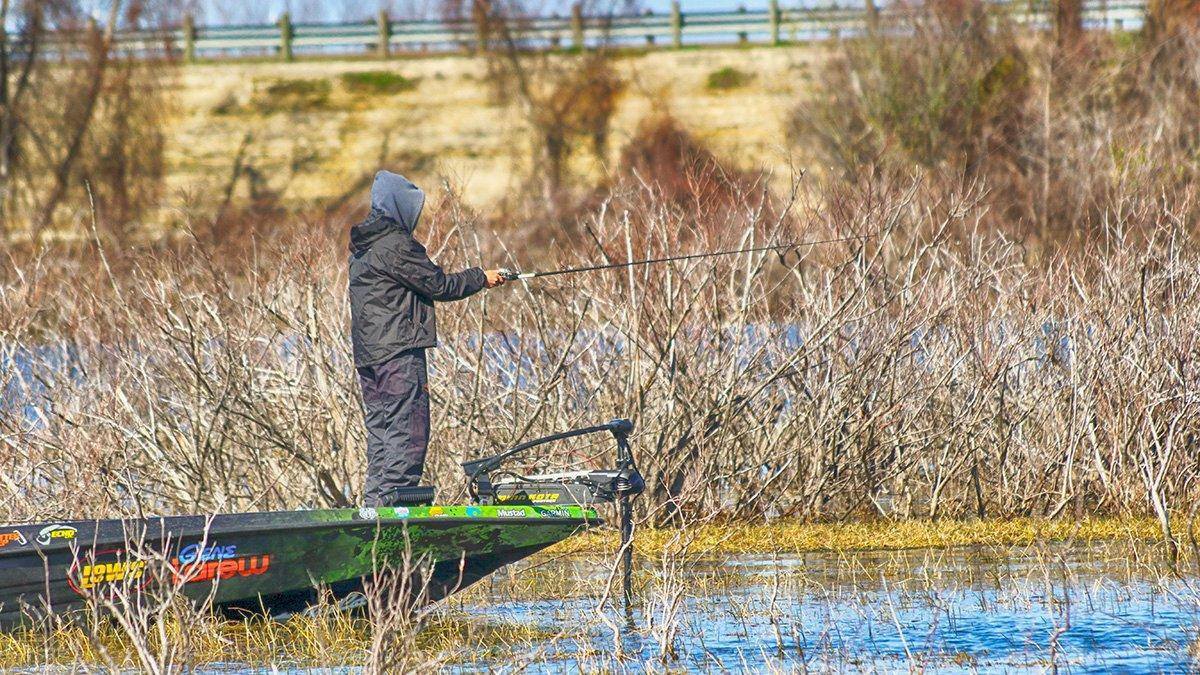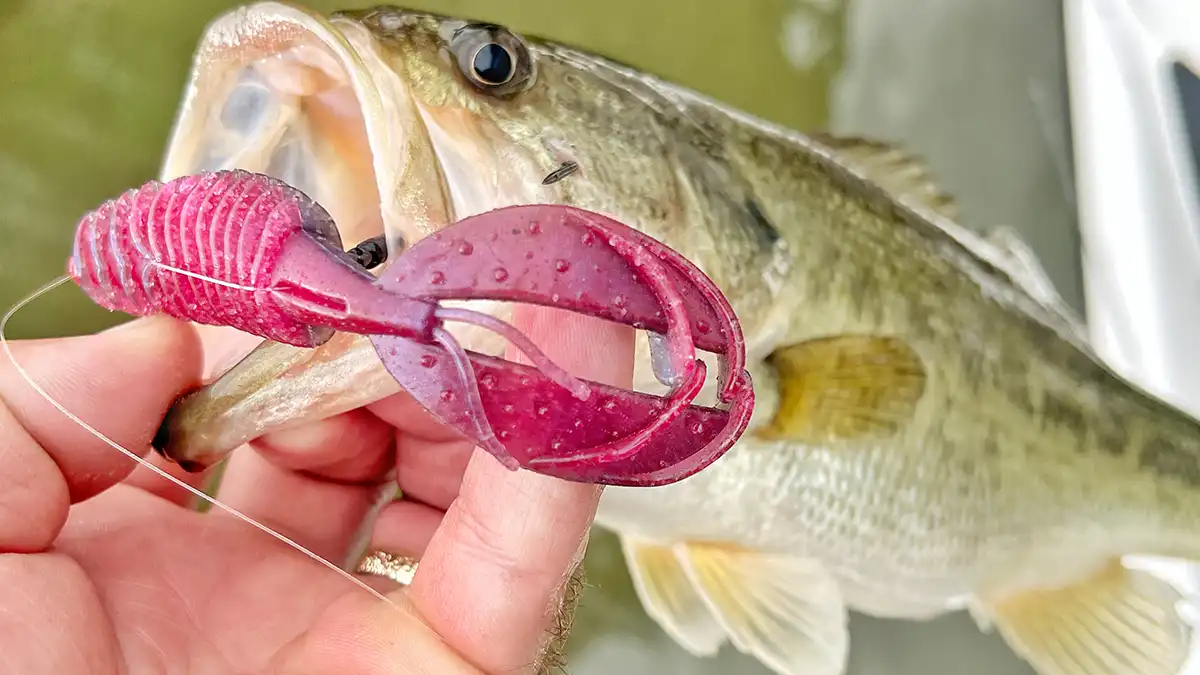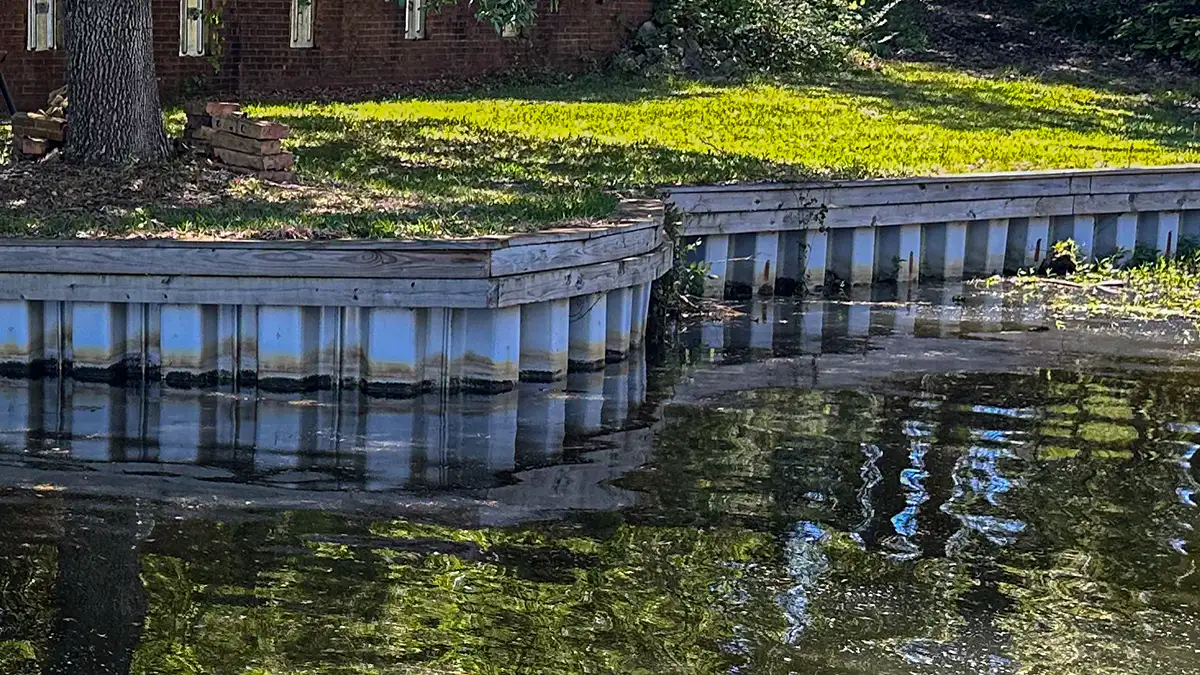Trolling motors and Power-Poles definitely help with shallow fishing, but when you just need a little nudge, a slight repositioning, and the ultimate stealth approach, a push pole can be your best buddy.
“When I’m push poling, it’s a time I need complete silence,” said FLW pro Andrew Upshaw. “I don’t want any noise whatsoever. I don’t want any trolling motor noise; a lot of times, I’ll turn my graph off. When I’m in shallow water and fish are spooky, I need to be super quiet and the only way to do that is with a push pole.”
Upshaw’s choice is the T-H Marine Money Pole, a 6 to 18-foot telescoping pole with a coiled tip for retrieving snagged baits. Removing the coil and pushing with a pole he can collapse and store in his rod locker makes good use of a tool he’d carry anyway.
Elsewhere, options range from multi-piece push poles stored behind your seats to homemade jobs created from heavy gauge PVC to wooden dowels. (Tip: Electrical tape, or athletic tape prevents blisters and keeps splinters at bay.)
Whatever your choice, mind these points for better performance.
Position vs. Propulsion
Generally, push poles are like a ship’s thrusters; they help with precise positioning needs like inching into range of a nervous bed fish or clocking around for the optimum sun angle or simply lining up a different presentation to irritate the fish.
For bass anglers, making significant moves with a push pole is a situation-specific deal.
“The only time I would use a push pole to cover a large area would be somewhere like Florida on a grass flat,” Upshaw said. “The advantage is that when you get on a big grass flat, because that trolling motor gets super loud when you start digging in around cover and stuff.”
All In the Angles
For the proper balance of stealth and power, Upshaw stresses diagonal over vertical.
“Putting the tip of the pole out at a farther distance gives you more stability,” he said. “I never hold my push pole straight up an down. Keeping the pole at a 45-degree angle, it’s not going to drag or scrape bottom; it will let you push back into the places you need to reach really quietly.
“It’s one thing to hold yourself in position with the pole straight up and down, but when a push pole is straight up and down you don’t have any control (for movement).”
And don’t think that a push pole is only for pushing. One of Upshaw’s tricks for silent and targeted movements is to reach in front of the boat with the pole at a 45 and actually pull himself on track.
Don’t Overdo It
Probably the biggest mistake Upshaw sees anglers making with a push pole is using it like an oar on the side of the boat.
“They’ll put the push pole off to the side of the boat and push, but that never puts you on a straight line,” he said. “The number one thing you need to be focused on is looking around your area. If you’re focused on which way the boat is going, you’re not focused on looking.”
“That’s why you see me pushing while standing on the trolling motor a lot, because if you get up there, you have a true line of sight. Every inch higher you can get, is an advantage.”
Manage the Moment
So, you’re push poling into position, maybe making a minute adjustment, and Bam! The fish decides she’s had enough of the intruder and red lines her aggression. How do you manage the push pole and handle the rod?
“I may try to wrap my knee around the pole, or a may tuck it under my left arm, but to put it bluntly, it’s a cluster,” Upshaw said. “A fish can bite at any time and your number on priority is catching the fish. If your push poles goes in the water, then it goes in the water.
“Normally, if I’m on a big fish, I’ve already put my push pole down and I’ve dropped my Power Poles. But, given the circumstances, I’ll just drop it in the water. That’s just part of it.


